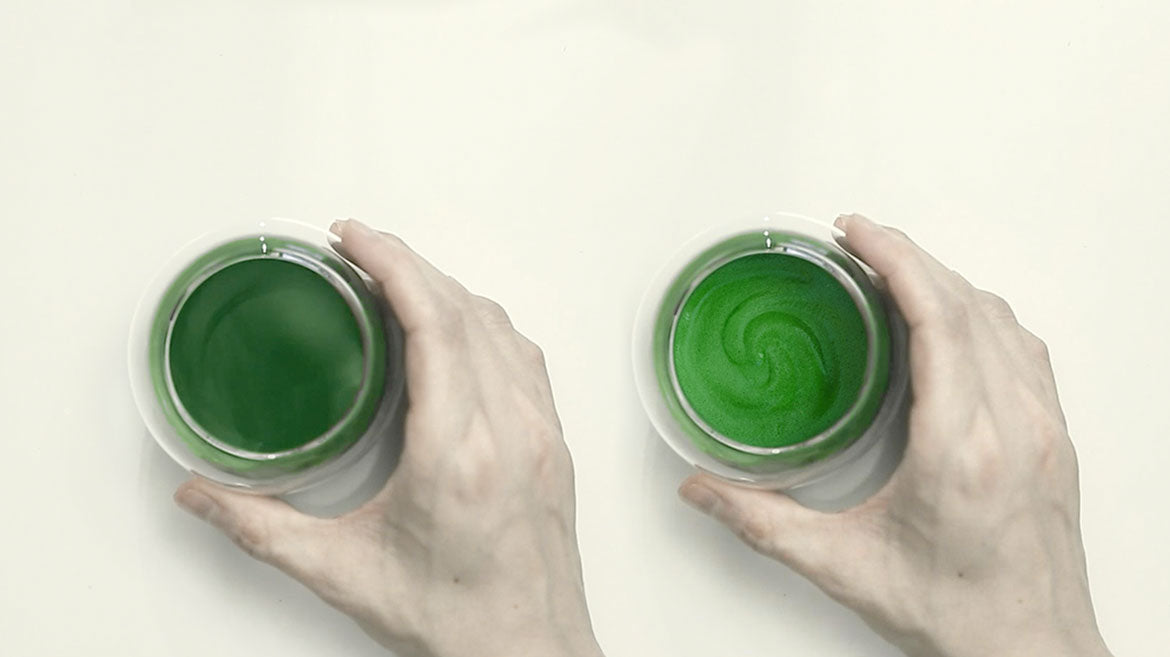In traditional Japanese tea ceremonies, there are two styles in which matcha is prepared – Usucha and Koicha. Usucha, literally translated as ‘thin tea’, refers to a thin, or light, preparation of matcha — the version we see most commonly prepared. Koicha, literally translated as ‘thick tea’, refers to a style of matcha preparation that is much more concentrated than usucha, and is traditionally prepared as a communal drink during a tea ceremony to be shared among the guests. In general, koicha is usually reserved for special occasions whereas usucha is more of a day-to-day preparation.
The key differences between usucha and koicha are the ratio between matcha vs water and the preparation method. When preparing usucha, one serving of matcha (~1g) is mixed with approximately ~70ml of warm water – whereas when preparing koicha, double the amount of matcha is used (~2g) with half the amount of water ~35ml. As a result, koicha is generally four times more concentrated in comparison to usucha.
Preparation of usucha and koicha are significantly different. For usucha (please see How to Brew Ceremonial Matcha - Usucha), the first step is to massage the matcha powder with a small amount of water until a smooth paste forms, then additional water is added to dilute down the concentration. Usucha can also be frothed using a Traditional Chasen to create a layer of froth on the surface of the tea for a smoother mouthfeel if desired. For koicha (please see How to Brew Ceremonial Matcha - Koicha), one gently massages a much larger amount of matcha powder and a few drops of warm water with the bamboo chasen, then only adds a little bit more water for additional viscosity. The final consistency of koicha should represent that of melted chocolate or honey.
The age of the tea plants is another key differentiating factor between matcha grade suitable for koicha vs usucha preparation. Matcha suitable for koicha preparation is usually sourced from the leaves of tea plants older than 30 years and above, whereas that for usucha is typically sourced from tea plants younger than 30 years old. Due to the concentrated nature of koicha, the preparation therefore calls for exceptional, ceremonial matcha, such as the Misaki™ matcha grade — whose delicate, sweet-savoury umami notes can be savoured for its epicurean quality. Using culinary matcha or anything lower in grade for the koicha preparation would result in an unpleasantly bitter-tasting drink.
Preparing koicha can be a great way to determine the quality of the matcha. Since koicha is prepared in a much higher concentration, it results in the amplification of all the senses — the aromas and flavour profiles of the matcha. Besides the usual usucha style of preparation, we at Matchaeologist recommend you to try preparing matcha in the koicha style at least once, as it would not only enhance your matcha-making experiences, but it would also allow you to truly understand and appreciate the exceptional quality of the matcha you are preparing even more.


